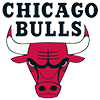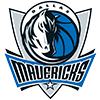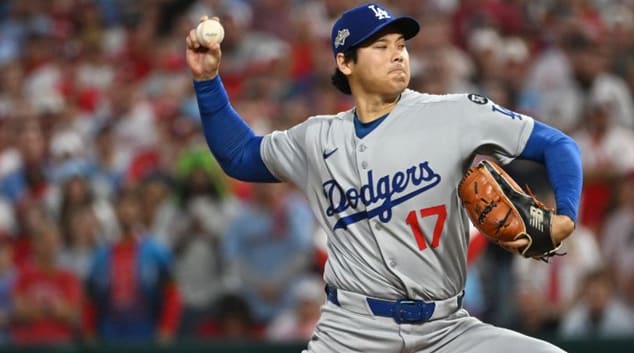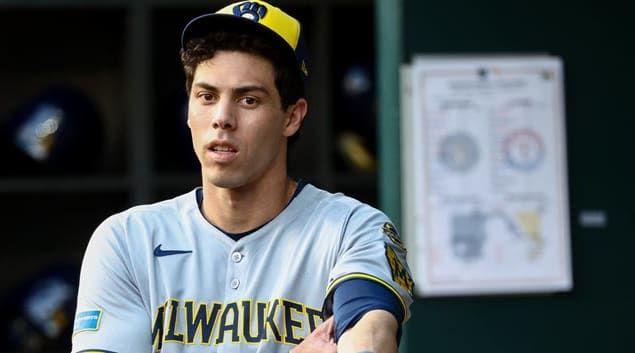A pitcher being lucky or unlucky seems to be constant theme about this time of year. Should pitchers posting numbers much better than their career norms regress to their estimated talent levels? Well, maybe. Pitchers can change during a season. Two factors, left on-base percentage (LOB%) and batting average on ball-in-play (BABIP), are the stats I concentrate on when looking for underpriced or overpriced pitching. These are the two stats with the most luck involved.
There are several reasons I like to concentrate on these two stats. LOB% is a measure of how many runs are stranded on base and has a lot to do with sequencing of events. A team could go single, single, home run against a pitcher and score three runs. Going home run, single, single will likely score only one run. Each pitcher had the same results, but the order was different. With BABIP, pitchers have little influence on how non-home run balls are hit. Here is the result of a study I did at the Hardball Times on the subject:
In small year-to-year samples with Inside Edge data, pitchers have no ability to allow or prevent hits. This is really no surprise, since batting average on balls in play (BABIP), which takes the defense behind the pitcher into account, stabilizes around 2,000 balls in play.
I wonder if part of the stabilization is having a good (or bad) defense behind the pitcher for multiple seasons. Over the last 10 seasons, Matt Cain has the highest
A pitcher being lucky or unlucky seems to be constant theme about this time of year. Should pitchers posting numbers much better than their career norms regress to their estimated talent levels? Well, maybe. Pitchers can change during a season. Two factors, left on-base percentage (LOB%) and batting average on ball-in-play (BABIP), are the stats I concentrate on when looking for underpriced or overpriced pitching. These are the two stats with the most luck involved.
There are several reasons I like to concentrate on these two stats. LOB% is a measure of how many runs are stranded on base and has a lot to do with sequencing of events. A team could go single, single, home run against a pitcher and score three runs. Going home run, single, single will likely score only one run. Each pitcher had the same results, but the order was different. With BABIP, pitchers have little influence on how non-home run balls are hit. Here is the result of a study I did at the Hardball Times on the subject:
In small year-to-year samples with Inside Edge data, pitchers have no ability to allow or prevent hits. This is really no surprise, since batting average on balls in play (BABIP), which takes the defense behind the pitcher into account, stabilizes around 2,000 balls in play.
I wonder if part of the stabilization is having a good (or bad) defense behind the pitcher for multiple seasons. Over the last 10 seasons, Matt Cain has the highest amount of value added by balls in play. Over the same time frame, the Giants defense was rated the best in the league by UZR. The No. 2 pitcher in getting value from preventing balls in play is Jered Weaver. The Angels defense producing the fourth-highest UZR value over that time frame.
Now, the team's defense can possibly be taken into account, but initially owners should expect a pitcher's large BABIP to decline.
Another factor some people like to take into consideration is home run rate such as how far a pitcher is from the league average. In an article just published at FanGraphs, I found pitchers see a noticeable change in their home run rate as their velocity declines, but no change in BABIP or line drive rate. I am wanting to look at the most luck-influenced stats.
So, what LOB% and BABIP values should be considered to be too high or too low? Well, I am going to go a little nerdy and then make it simple. Looking at 2014 stats for starters (min 60 IP) and relievers (min 20 IP), I found the average and standard deviation for both LOB% and BABIP. Within one standard deviation, 66% of the pitchers will fall in this group. Then 29% are between 1 and 2 standard deviations with only 5% of players greater than two deviations from the mean. Here are the values for starters and relievers.
BABIP
Deviations from mean: Starters, Relievers
3: .370, .425
2: .345, .380
1: .320, .335
0: .295, .290
1: .270, .245
2: .245, .200
3: .220, .155
LOB%
Deviations from mean: Starters, Relievers
3: 88%, 99%
2: 83%, 91%
1: 78%, 83%
0: 73%, 75%
1: 68%, 67%
2: 63%, 59%
3: 58%, 51%
Two items stick out. Relievers are currently getting better results than starters with a lower average BABIP and higher LOB%. The values aren't that much different, but enough to be noticeable. The other difference between relievers and starters is the gap between each tier. Relievers threw fewer innings, so there is more deviation in their values compared to the starters.
The values which are at least one deviation from the mean are pitchers to possibly target as buy low opportunities. They are most likely to see the largest improvement. For example, in the first half of 2014, 22 pitchers (min 30 IP) had an LOB% under 68%. Their median LOB% was 66% and a median ERA of 4.93. In the season's second half, they almost all regressed to the league average with a median LOB% at 72% and their median ERA dropped to 3.88.
Now looking at the pitchers with a high BABIP driving up their ERA. In the first half of 2014, 28 pitchers had a BABIP over .320 for a median value of .338 and 4.52 ERA. In the second half, those pitchers saw their median BABIP drop to .298 (near the league average) and their median ERA drop to 3.70.
Now, not every pitcher will regress near the league average, but it is highly likely. Now, here are some pitchers from this season who could see an improvement going forward if their BABIP and/or LOB% improves.
Pitchers who are likely to improve
Clayton Kershaw (68% LOB%, .335 BABIP, 3.86 ERA) – I am pretty sure the 3.86 ERA is the lowest ERA for pitchers who may see improvement, but we are dealing with Kershaw. Owners didn't spend a first round pick for a 3.86 ERA, but one probably around 2.00. Nothing sticks out as a real issue with him, but I could see him morph into the old Kershaw and make a run at another Cy Young award.
Stephen Strasburg (58% LOB%, .390 BABIP, 6.50 ERA) – I am not as sure about a Strasburg turn around though. A few items make it look like the change is more than just bad luck. First, here are his GB% and HR/9 over the past three seasons.
Season: GB%, HR/9
2012: 52%, 0.79
2013: 46%, 0.96
2014: 42%, 1.02
Less ground balls, more home runs.
Additionally, he has a career Contact% of 76%, but the number is up to 85% this season. Finally, he is having issues pitching with runners on base.
Season: K% with no runners on, K% with runners on
2013: 28%, 24%
2014: 28%, 28%
2015: 28%, 13%
Something is just not right with him.
Carlos Carrasco (65% LOB%, .351 BABIP, 4.74 ERA) – He is pretty much the same pitcher as 2014, but probably better with his K/9 up over 1.2 (9.4 K/9 to 10.6 K/9). The biggest issue bring Carrasco down is the defense behind him. The overall BABIP for the staff is .323 which is the league's highest value. His BABIP may not drop to the .295 league average, but he should expect it to be lower.
Pitchers who will likely get worse
Zack Greinke (89% LOB%, .222, 1.48 ERA) – I am not going to argue about Greinke being a bad pitcher, he is just not this good of a pitcher. His BABIP and LOB% would have the league's best values by quite a way if compared to 2014 qualified starters. The 1.48 ERA is just not going to last.
Michael Wacha (85% LOB%, .232 BABIP, 1.87 ERA) – I expect a turnaround season for Wacha, but not this good of season. His 5.5 K/9 is 94th of 108 qualified starters. Pitcher with similar K% and BB% have ERAs of 4.80 (Scott Feldman), 5.33 (Jerome Williams), 4.27 (Shane Greene) and 4.00 (Wily Peralta). I expect Wacha to really struggle over the season's second half.
Tim Lincecum (83% LOB%, .259 BABIP, 2.56 ERA) – I am not sure how Lincecum his pulling off this magic trick. Compared to last season, his velocity is down, his strikeouts are down and his walks are up. He has been able to keep his home runs in check. I don't see it continuing at all. Most of his stats point to a worse 2015 season than his 2014 season.



























